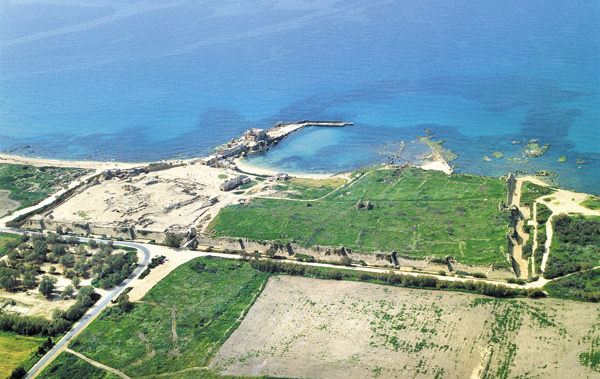Caesarea’s Mighty Harbor
Sidebar to: Building Power
Caesarea’s Mighty Harbor

Herod named the Caesarea harbor Sebastos, Greek for Augustus—an extraordinary monument to the emperor and to Herod’s patron. But the harbor also a monument to Roman engineering prowess.
The harbor was formed by two massive breakwaters or moles that extended nearly 1,600 feet into the sea from the shore and formed two basins in which ships could tie up and load or unload cargo. The longer, southern breakwater curved around to approach the shorter, northern one, which was straight (both are visible in the photo). Both breakwaters were wide enough (at 150 and 200 feet, respectively) to accommodate warehouses built on top and to give access to ships inside the harbor. The 60-foot gap between the two breakwaters served as the harbor entrance. Three large concrete islands supporting monumental sculpture—perhaps for use as navigational aids—straddled the entrance. Next to the shore of the harbor was an inner basin (at left in the photo) formed by another barrier that provided additional dock space.
Already a library member? Log in here.
Institution user? Log in with your IP address.

